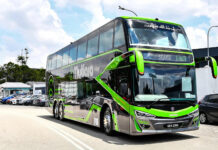The vision of a “Made in Africa” label symbolizes more than a branding initiative—it represents a transformative ambition for a continent eager to claim its rightful place in the global economic arena. A recent study, jointly conducted by the General Confederation of Moroccan Enterprises (CGEM) and the African Development Bank (AfDB), underscores the immense potential and urgency of such a move. Introduced by Abdou Diop, chair of the CGEM’s Africa Commission, at the African SME Forum in Rabat, the findings present a dual narrative: boundless opportunities paired with formidable challenges.
Breaking the chains of dependency
For decades, Africa has primarily served as the world’s supplier of raw materials, exporting its wealth in unprocessed forms while importing finished goods. This dynamic has allowed other regions to reap the lion’s share of economic benefits from Africa’s abundant resources, leaving its own populations with marginal gains. The study emphasizes the critical need to break away from this cycle by promoting integrated value chains, harmonizing quality standards, and enhancing regional connectivity.
A “Made in Africa” label would be more than a marketing tagline. It represents an opportunity to highlight the continent’s craftsmanship, innovation, and potential as a competitive global player in manufacturing and services.
Collaboration: The key to success
This ambitious project requires the combined efforts of public and private sectors. Governments must create business-friendly environments with streamlined regulations, strategic investments in infrastructure, and robust policies to support trade. Meanwhile, private enterprises are tasked with driving innovation and channeling investments into promising industries.
ZLECAf: Africa’s economic game changer
The African Continental Free Trade Area (AfCFTA or ZLECAf) stands as a historic opportunity to bolster intra-African trade and create sustainable economic ecosystems. The study identifies strategic industries—including automotive, agro-food processing, textiles, and electronics—where Africa can emerge as a global leader.
However, structural hurdles remain. Infrastructure deficits, high energy costs, and poor transportation networks present significant obstacles. Yet, the continent’s ongoing energy transition, often viewed as a burden, could become an essential driver for building a resilient and sustainable industrial base.
Africa’s greatest asset: Its people
With a young and dynamic population, Africa boasts unparalleled human capital. Yet, this talent pool remains underutilized due to inadequate training that fails to align with market demands. Skill development and education must go hand-in-hand with industrialization, enabling millions of African youth to actively participate in shaping the continent’s economic future.
The dawn of a new era
While the road to realizing a “Made in Africa” label is fraught with challenges, the foundation has been laid. The question is no longer if Africa will rise to global prominence but when. A label that embodies the continent’s diversity, resilience, and ambition could spark an era of self-reliance and shared prosperity.
The countdown to Africa’s economic transformation has begun—and the world is watching.
Mohamed Mounadi





